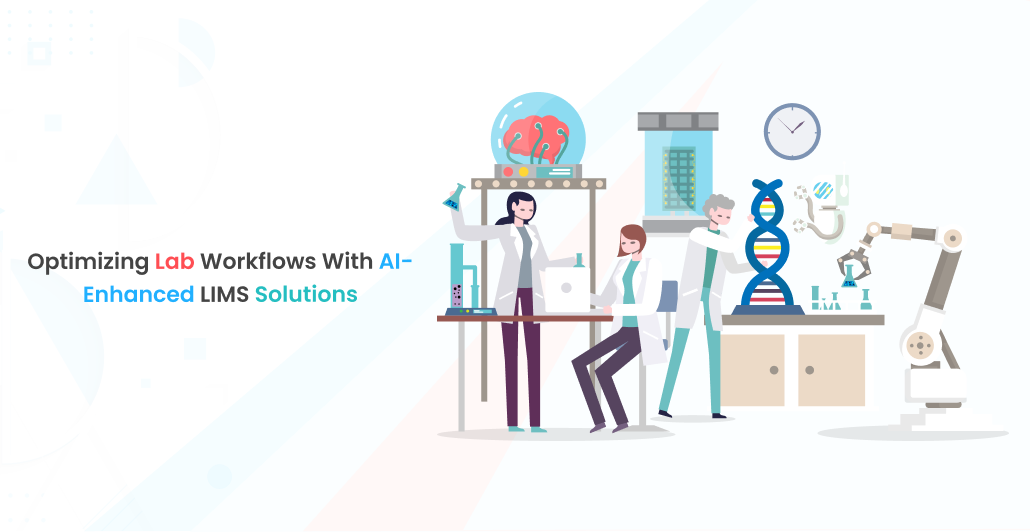Introduction:
AI-integrated LIMS is transforming the way laboratories function and improving the operational efficiency of labs. Laboratory Information Management System with the incorporation of AI can help the labs achieve better results in terms of time management, reducing manual work or tasks, and increasing the quality of data collected. This sophisticated technology not only increases productivity but at the same time, leads to better decision-making in the fastest way possible. AI solutions integrated into LIMS change the approaches to laboratory management and improve the productivity of organizations.
The Evolution of LIMS
LIMS’ have come a long way since they were first introduced in the 1970’s, and have changed the way laboratories process data. Initially, LIMS were simple systems that were used to deal with the problems of sample management and entry of the results, mostly concentrating on the functionalities’ optimization.
With technological advancement came the development of LIMS. In earlier systems, they were simple and separate but when more complex technologies were incorporated, changes for the better ensued. Increased access to digital databases was beneficial for organizing data while early automation helped in eradicating errors in labs and simplified the working process.
Lately, LIMS has been enhanced with AI and machine learning aspects into them as well. This has been the case, especially in healthcare facilities, where Pathology Lab Software that is connected to LIMS is vital. Nowadays, AI-integrated LIMS has capabilities like predictive modeling, real-time computing, and integrated detailed process management. Such changes assist pathologists and lab technicians in working with large amounts and types of data and in making suitable decisions.
In conclusion, it can be realized that the development of LIMS has been influenced by the advances in technology and with the compounding need for complex systems in health care delivery; has greatly enhanced the efficiency and accuracy of laboratories.
Future Trends in AI-Enhanced LIMS
AI-centric LIMS of the future is, therefore, expected to experience significant advances, especially in healthcare. Here’s a glimpse into the emerging trends shaping this evolution:
Advanced Predictive Analytics: AI is becoming more involved in the utilization of predictive analytics, and even more accurate probabilities in terms of equipment maintenance and workflow. Knowing when potential issues are likely to crop up in Pathology Lab Software and LIMS in healthcare, means that health facilities can work harder on preventing the issues from arising and thus improving the flow of their laboratories.
Integration with IoT Devices: This is set to be a revolution for LIMS through the Internet of Things that will connect with more lab instruments and sensors. This connectivity leads to live observation and management of the lab and its functions, extending the understanding of all aspects occurring in a laboratory and increasing the probability of generating more accurate diagnostic outcomes.
Enhanced Data Interoperability: Future developments in LIMS will start targeting the problem of data connectivity, which will enhance their interaction with other healthcare systems such as EHRs. This integration provides a broader perspective of the data of a patient and makes the working process more efficient, essential for managing pathology and laboratories.
AI-Driven Decision Support: Decision support capabilities that AI provides will also enhance LIMS in the future; different recommendation and decision-making tools will be provided. This shall help to better the lab procedures accuracy and speeds aiding in bettering patient care as well as research results.
Challenges and Solutions
There are certain issues, which can be regarded as the specific problems of integration of modern Laboratory Information Management Systems into healthcare facilities, while solving these issues has the potential to provide definite benefits for healthcare laboratories and patients.
Data Security and Privacy: Some of the major issues include the protection of patient data and information as this is an area of continued worry in healthcare organizations. A common regulation requirement of LIMS Play In Healthcare is HIPAA to protect the health information of patients. These risks can be managed through the use of strong, appropriate encryption techniques, access to the database, and proper auditing of the database activities.
Integration with Existing Systems: Notably, most healthcare facilities have integrated several systems for different purposes and, therefore, integration of LIMS with the current EHRs and other software is challenging. Solutions include deciding on LIMS with good interfacing capabilities which may require the leveraging of middleware or API.
User Training and Adoption: This tells you that changing your LIMS system needs sufficient training of the laboratory personnel so that they can easily adapt to the new system. Workshops, constant mentoring, and the development of interfaces with a focus on the user may help in the transition and use of systems.
Customization and Scalability: Besides, it is common that the needs of healthcare laboratories may differ significantly and depend on specific requirements, which is why LIMS is also adjusted for them. The fact that the company uses vendors that provide solutions and systems that may be further developed and adjusted to the lab’s specifics allows the LIMS to evolve according to the demands of the laboratory.
Conclusion:
Lab automation using advanced AI-integrated LIMS highlighted by work culture improvement is a progressive step in the evolution of laboratories. These advanced systems help the labs to work more efficiently due to the automation of some tasks, enhanced accuracy, and simplification of various procedures. This paper also seeks to provide vital information on the advantages of incorporating AI in LIMS showing that the application not only increases efficiency but also improves patient care in laboratories towards smarter laboratory management.



